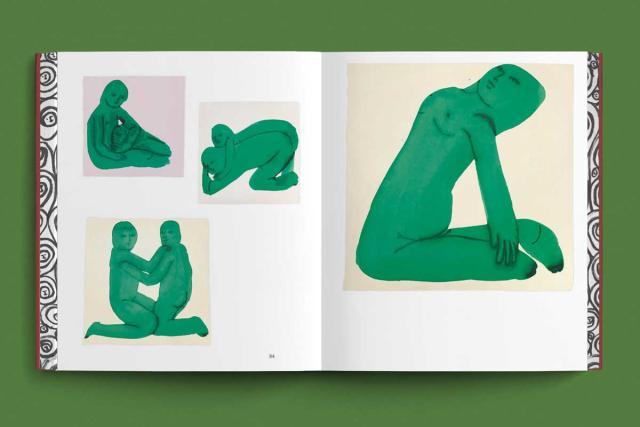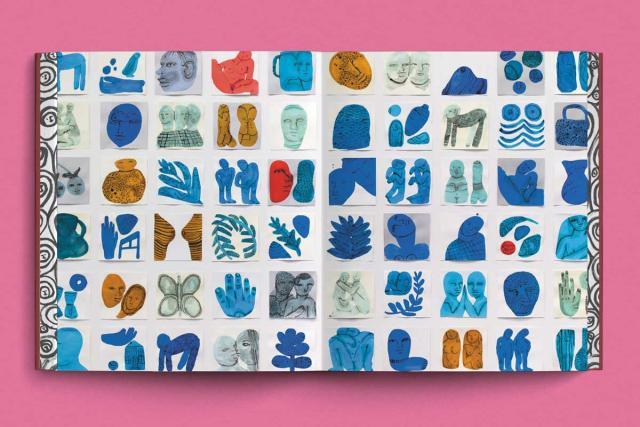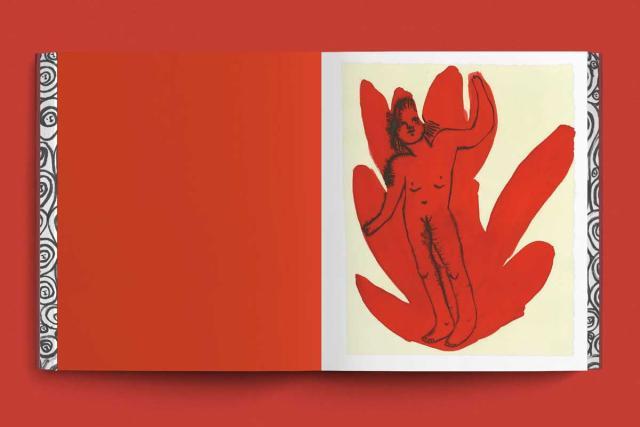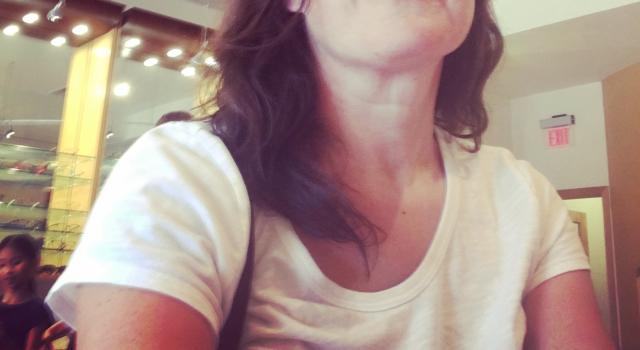Hampshire College Alum Emma Kohlmann 07F’s Debut Book Catalogs a Decade of Watercolor Works
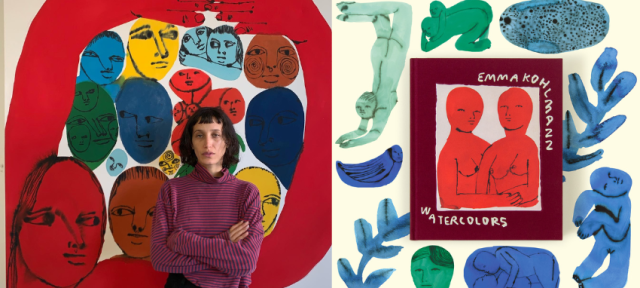
Emma Kohlmann: Watercolors, a collection of hundreds of her pieces, provides an intimate view of a decade of Kohlmann’s art, starting with works made at Hampshire in 2011.
Published by Anthology earlier this month, Kohlmann’s book involved collaboration with two fellow alums, the writer and scholar Laura Deutsch 06F and the writer and musician Mark Iosifescu 08F.
We recently spoke with Kohlmann about her Hampshire experience, her Div III, the process of archiving ten years’ worth of work, and her belief in a universal soul to everything.
Where are you from? What attracted you to Hampshire?
I grew up in New York City and went to Beacon High School, which had a very similar approach to Hampshire when it comes to the idea of students’ independence. There was a lot of self-directed learning at a young age, so I knew I wanted to have an experience free from majors and restrictions and to learn things that I actually wanted to learn instead of a typical liberal arts education.
I applied to a lot of schools that I think ultimately weren’t the right fit for me. I applied to B.F.A. programs but didn't get anywhere, and although that was really hard, I think it was good for me. I’m glad that I didn’t go to an “art” school — not that there’s anything wrong with that — but I wanted to have a more multifaceted education, one in which I could study history and theory and science and learn how to use that information as a way to make art.
What did you study at Hampshire?
So many things. I went to Hampshire initially wanting to study biology — microbiology and marine biology — I really liked the idea of doing that. I took an old growth forest class, a literature class, a lot of classes in postcolonial theory. Certain classes that I’d heard about through friends I didn’t even take; I would just read other people’s syllabi.
In the second semester of my junior year [Div II], I went to India. It was such an amazing place to see art, and life there was so beautiful; just walking down the street, I was really inspired. I came back from there wanting to make more art and focus more on watercolor and getting into drawing. When I returned for my final year, I did a 180 in some ways; I was more interested in utilizing art as a way to talk about theory. I started taking classes on cultural critique and aesthetics.
I remember when I tried to get a studio in the art barn, some of the professors questioned that, asking: Why would you want to have a studio? Are you going to use the studio? Because up until then, I hadn’t concentrated on art at Hampshire. But I assured them I would use the space, and I did. I was there every day. I made working in the studio my job. I felt that it was a huge privilege to be able to have that space to create.
What was your Div III?
I wrote a paper, “Wangechi Mutu and the Weight of the Segmented Body,” investigating contemporary artists at the time and the Westernization of the beauty concept and the extremes between “ugliness” and “beautyness” and the conversation that happens within these artists’ work. I mostly discussed the work of Wangechi Mutu, a Kenyan American visual artist who worked with collage and watercolor.
Then I made a show focusing on the body and the abstraction of figures, leaning into deconstructing “beautyness.” I made all these watercolors and drawings and installed them in the Hampshire College Art Gallery. It really helped me recognize a practice and a path that I hadn’t realized I had an interest in taking.
How did your experience here at Hampshire influence your current work?
There are parts of the work that I did at Hampshire that prepared me for my life now. I still think about my Div III when I’m having a hard time in the studio as almost a remedy for when I’m feeling run down or uninspired. I remind myself that I can retreat and find new ideas.
I’m really grateful that I went to Hampshire. It was beneficial for someone like me, who is driven independently and also responds better to discovering things on their own without someone telling them what to do. I feel like with “normal” schools, there’s a planned procedure you have to exist by, and I think Hampshire is gentle in the way it nurtures your own growth and you can see the results of that.
What inspires you? How did/do you approach the subject matter of your art?
Early on, I was approaching my work through a gender study. I think especially for my Div III, I was trying to subvert the Westernized ideal body type using abstraction to dismantle the ideas of what an idealized form is.
And I was also trying to speak to androgyny and demystifying the female body in that way, and that still carries through my work — utilizing mythology and dreams and intuitive painting. I use subject matter that feels symbolic — like a window or a wheel or a horse with a person. I believe there’s a universal soul to everything and I anthropomorphize that with objects. I’m interested in that as a unifying force for emotion and mood.
I’m really grateful that I went to Hampshire. It was beneficial for someone like me, who is driven independently and also responds better to discovering things on their own without someone telling them what to do. Emma Kohlmann 07
You recently published an inaugural book of your works, showcasing a collection of hundreds of paintings. Can you tell us about that process?
I worked at an amateur archive after college and that actually inspired me to begin archiving my own work. It was a way for me to reflect on the stuff I’d made that week or what I wanted to explore next in terms of subjects, and it was such a funny thing because I never thought it would become a book; I just wanted to have my own inventory of work. I started out by going to the Neilson Library at Smith College and scanning all the drawings I’d make that week and saving them in a Dropbox.
Eventually, after many years of scanning, I accumulated about 1,000 drawings. It’s that archive that essentially became the book. Now, I get to reflect back on the works I made — some of which I no longer have — and share them, which has been really cool.
Two Hampshire alums worked on this book with you. Can you tell us about that?
Mark Iosifescu 08F works at Anthology, my publisher, and is one of the editors of the book. He’s someone I kept in touch with after Hampshire. We were both in the music scene, and I would see him at shows and we kept connected through that. Then, in 2021, he reached out to me. He’d been following my work for a long time and was interested in working with me. He has invaluable expertise in knowing how to make something like this, which was such a big endeavor.
Laura Deutsch 06F, who goes by the pen name LD, wrote an essay for the book. She’s been a close friend of mine for years, since we were at Hampshire. I have such admiration for her writing and what she does.
What advice would you give to Hampshire students?
I think what I struggled with the most in college was that I was uncertain of myself. I took challenging classes, and I’m so grateful for that because it pushed me to try to understand things that were outside of my perceived interests.
Trust your intuition and don’t be hard on yourself when you don’t understand something. It’s okay if it takes a moment — you’ll eventually get it if you’re putting in your best effort. That’s something I tell myself in my own life now. Things take time. It takes time to build a career and to build a community of people around you.
Header image photo credit to Charlotte Kohlmann, 2020.
